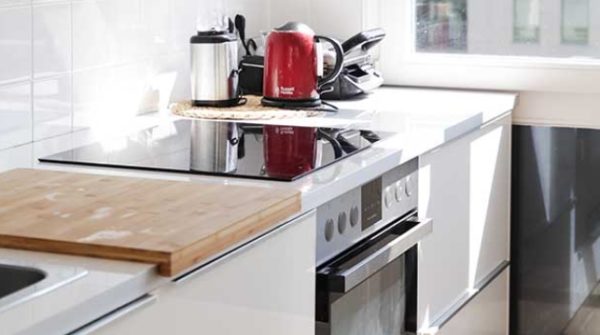
With the cost of living steadily increasing and the strain being placed on the country’s electricity supply, we share the most power-consuming appliances in your kitchen.
Energy usage in appliances is measured in kilowatt hours (kWh). One kilowatt hour is the amount of energy you’d use if you kept a 1,000 watt appliance running for an hour. Different appliances use different amounts of electricity.
Here are the highest-energy consuming appliances found in most South African homes.
1. Dishwasher
Although dishwashers are designed to be energy-efficient (only dishwashers rated as A or above can be sold in South Africa), how you use your dishwasher can render it inefficient or efficient in energy consumption. Size plays a large role in this exercise. The bigger the dishwasher, the more electricity and water required to clean a full load of dishes. So buy a machine that is just big enough for your needs.
The average dishwasher is estimated to run 354kWh per year. To cut down on the consumption of your dishwasher, instead of running partial loads, wait until the dishwasher is full, which will save energy and water by reducing the total number of cycles required in a week.
2. Fridge
A fridge is one of the few appliances that is switched on 24 hours per day, 365 days a year. For this reason, a fridge can use anywhere between 201kWh and 500kWh per year, depending on the size and type of fridge.
To minimise the energy consumption of a fridge, sizing according to your needs is important. A single person or a smaller family should consider a single-door fridge, while bigger fridges are more in line with bigger families. Keep the doors closed, ensure the seals work, and adjust the temperature appropriately to keep it energy-efficient.
3. Electric oven
The oven became a staple appliance during the height of the Covid-19 pandemic and its subsequent lockdowns as we all took up one baking challenge after the other, racking up kilowatt hours in the stove usage. Now that the baking frenzy has quietened down, the oven still remains one of the highest-energy consuming appliances in the kitchen. A single electric oven running at 150 degrees to 220 degrees consumes about 875kWh per year. That figure also includes one hour per day of electric stovetop usage with the burners set on medium to high heat.
To minimise energy consumption while using the oven, keep the oven door closed while it’s in use and switch off the oven before you’re done grilling or baking as the oven stays warm long after it’s been switched off and many dishes can finish cooking in the residual heat. Also consider replacing it with a low kilowatt consumption appliance such as an air-fryer, which does the same job of grilling and baking in a fraction of the time.
4. Kettle
If you consider how often the kettle is used throughout the day, it is no wonder that this small appliance is included on the list of the highest-energy consuming appliances. To decrease the electricity consumption of your kettle, when you are boiling the kettle, don’t fill it to the brim. Only boil the amount of water you need.
5. Microwave oven
The average-sized microwave oven uses about 600 to 1,500 watts per day, totalling 215kWh of electricity per year. Because it’s often used for short periods of time during each use, a microwave’s overall yearly energy is not as high as that of other appliances. However, to save even more energy, make sure to unplug it when not in use. A microwave uses energy whenever it is plugged in, even if it is turned off.


